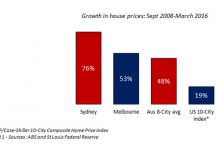People have recently been asking me about the ASEAN (Association of South East Asian Nations) Economic Community and how it will affect our lives after 2015. My business partner, Paul Gambles, recently wrote this article for the British Chamber of Commerce Thailand. It sums it up brilliantly.
The emergence of ASEAN consumers is an investment theme that has been bandied around as long as I have lived in Thailand (I’m now into my 20th year). The economic consequences of Thailand escaping the middle income trap and unleashing tens of millions more middle class consumers have been analysed from every angle. Thai banks providing increased retail banking services to a much wider mass affluent Thai market remains my preferred longer term investment play on Thai ‘gentrification’ followed closely by established retailers such as Central. However, there are other themes that investors would do well to remember in a backdrop where consumption and investment will replace exports as the main drivers of growth.
The OECD’s South East Asian Economic Outlook for 2013 expects private consumption to be especially robust over the medium term and the main contributor to overall growth in many countries of Emerging Asia:
“A combination of cyclical factors, government policies, and longer-term shifts in economic structure that have supported consumption growth over the past several years are likely to continue underpinning its growth over the medium term in Southeast Asia, China and India. Government policies are becoming increasingly supportive of private consumption. Furthermore, increasing government spending on health and social safety net programmes in much of Emerging Asia will continue to encourage consumption spending by freeing up household resources and by reducing their need for precautionary saving. In many Emerging Asian countries, investment growth should be as or more rapid over the next five years than over the five years leading up to the global financial crisis.”
The report highlights that the growth of middle class consumers in South East Asia has been amongst the fastest within Asia:
“Rapid growth in Southeast Asia, China and India over the past two decades has produced a remarkable expansion in the middle class. Strong consumption growth is also being favoured by the structural economic changes brought about by the rising middle classes in the region. Middle class development is affecting the structure of demand in Emerging Asia. Middle class households, particularly those in the higher portion of the middle income range, tend to devote a larger portion of their income to purchases of automobiles and other major consumer durables than do poor households. Increased demand for consumer durables and other consumer goods from the middle class is also helping to spur innovations. Middle class households also tend to spend a higher portion of their income on education and health services and to purchase more sophisticated health and education services…”
These trends will be reinforced by increasing longevity – ageing populations having exponentially increasing reliance on healthcare. Fund managers are waking up to this. At last year’s Singapore Expert Investor Forum, Credit Suisse’s Luxury and Asia Consumer equity specialist, Juan Manuel Mendoza highlighted the increasing demand and compelling outlook for Asian healthcare equities while the dominant fund in the sector, Invesco Asia Consumer Demand, run by William Yuen and Mike Shiao invests almost 5% of the fund in the healthcare sector, around twice the level of UOB’s Asia Consumer fund.
In all cases, the top holdings of these three funds do not include Thai-listed healthcare stocks. This, no doubt, largely reflects the narrow scope of liquid, well-covered diversified healthcare opportunities covered on the Thai main-board of the Stock Exchange where, in addition to several medical insurance providers, there is also a Healthcare Services sub-index, ‘HELTH”, whose fifteen current constituents comprise only private hospital businesses of varying sizes.
While these particular stocks may offer solid long term plays, even without the further consolidation that might be expected, in order to really offer investors opportunities to take advantage of ASEAN’s structural changes in healthcare via the SET, active and substantial pharma and medical devices sectors are really needed in their own right.
Singapore certainly offers more readily identifiable investment opportunities in these areas and AEC is getting closer by the day…




